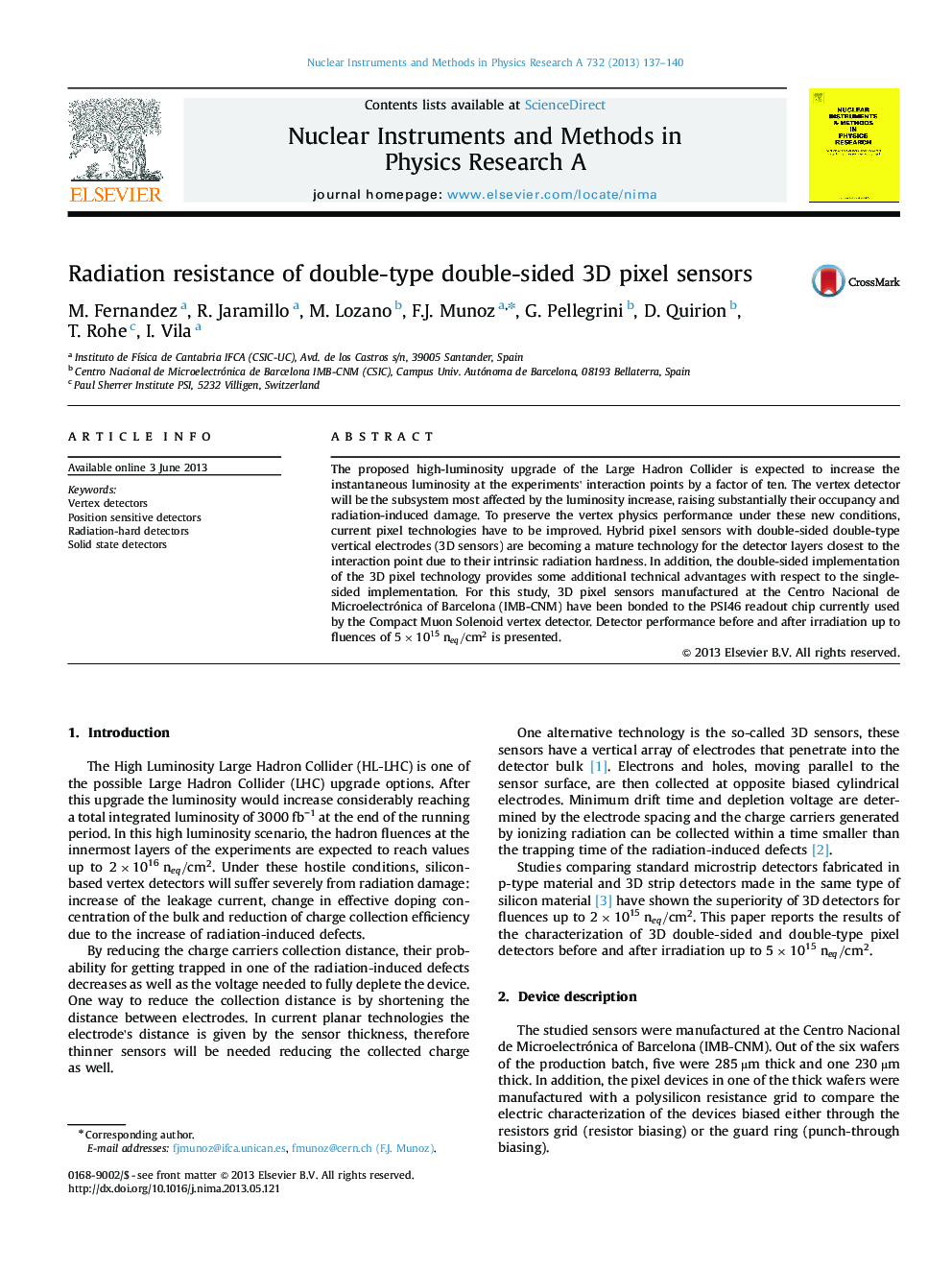| Article ID | Journal | Published Year | Pages | File Type |
|---|---|---|---|---|
| 8178713 | Nuclear Instruments and Methods in Physics Research Section A: Accelerators, Spectrometers, Detectors and Associated Equipment | 2013 | 4 Pages |
Abstract
The proposed high-luminosity upgrade of the Large Hadron Collider is expected to increase the instantaneous luminosity at the experiments' interaction points by a factor of ten. The vertex detector will be the subsystem most affected by the luminosity increase, raising substantially their occupancy and radiation-induced damage. To preserve the vertex physics performance under these new conditions, current pixel technologies have to be improved. Hybrid pixel sensors with double-sided double-type vertical electrodes (3D sensors) are becoming a mature technology for the detector layers closest to the interaction point due to their intrinsic radiation hardness. In addition, the double-sided implementation of the 3D pixel technology provides some additional technical advantages with respect to the single-sided implementation. For this study, 3D pixel sensors manufactured at the Centro Nacional de Microelectrónica of Barcelona (IMB-CNM) have been bonded to the PSI46 readout chip currently used by the Compact Muon Solenoid vertex detector. Detector performance before and after irradiation up to fluences of 5Ã1015neq/cm2 is presented.
Related Topics
Physical Sciences and Engineering
Physics and Astronomy
Instrumentation
Authors
M. Fernandez, R. Jaramillo, M. Lozano, F.J. Munoz, G. Pellegrini, D. Quirion, T. Rohe, I. Vila,
